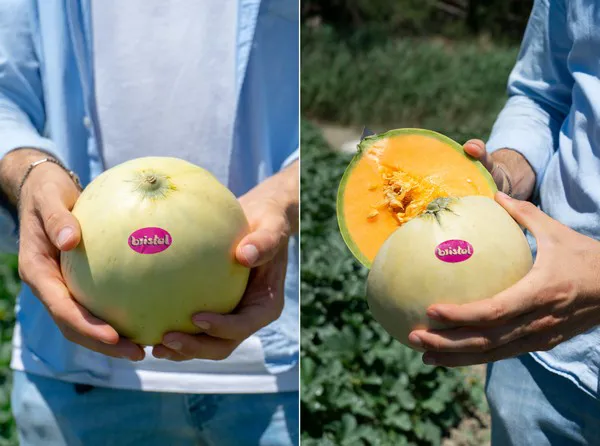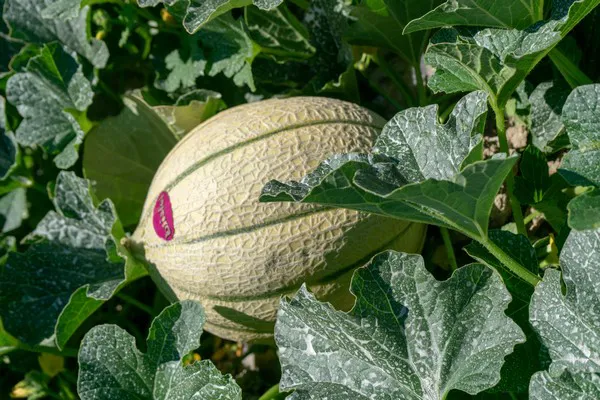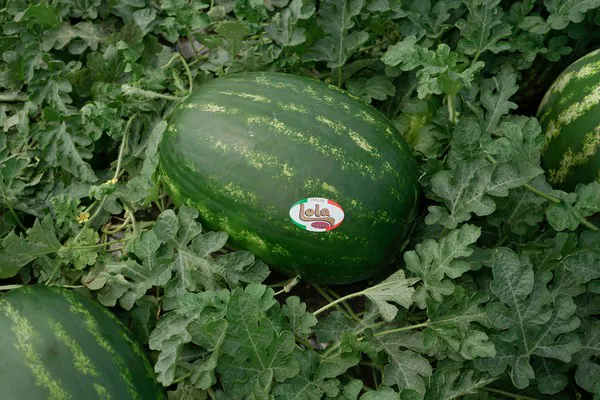The bad weather put a spoke in the wheels of the melon and watermelon campaign, leading to several diseases in the field and reducing the fruit set of the earliest transplants to a minimum.
"Rain was recorded for two consecutive weeks and open field melons were either in flowering or fruiting. There was a lack of pollinator insects (i.e., those that carry pollen from one flower to another, allowing pollination and subsequent fruit formation, ed.) and there was a lack of sunlight, on a continuous basis, which resulted in the offset of the phenological stages of the plants. Even those in the greenhouse grew more than the average for the period, causing delay in ripening. We had already recorded a rainy May in 2019, however, the rainfall also alternated with sunshine. This time, it has not been the case."
Tommaso Concari, technical manager of field production control and quality systems management of the Italian producers' organization Bristol, which specializes in melon and watermelon, provided an overview of the situation. The Op has member farms divided among five regions: Tuscany, Emilia-Romagna, Veneto, Lombardy and Abruzzo.
 Bristol brand smooth-skinned melon
Bristol brand smooth-skinned melon
"The bad weather definitely created more problems in the field than in the greenhouse and affected watermelons less than it did melons. In fact, watermelon plants reacted better, as they were already stronger, and their fruit ripened later than melons," emphasizes Concari. "The earliest melon transplants, i.e., those from late March to late April, were the most affected. The plants were weak, with some cases of asphyxia and lower fruit setting. Some hailstorms were also recorded in Tuscany. On the positive side, the plants were not yet fully developed during the bad weather and are now picking up."
The technical manager pointed out that this year, "we have to be very careful about how to best manage the phytosanitary strategy for defending plants, because the appearance of downy mildew and bacterial blight, both on melon and watermelon, is very dangerous. For the past 5 years, we had practically forgotten about downy mildew. This year, however, we have already detected it in some plots. In the remaining others, we are trying to keep it under control."
 Bristol brand cantaloupe melon
Bristol brand cantaloupe melon
In terms of cultivated area, the producers' organization is in line with the previous year with regard to the production in greenhouses. A 5-10 percent decrease has been recorded in the open fields. "However, every year there is always a physiological variation of 5 percent because of field rotation, but this year it will be compensated by the introduction of three new members. Two other companies in northern Italy are being evaluated."
Op Bristol is also looking for small-to-medium-sized farms in Tuscany, operating at up to 2-3 hectares. "We want to maintain our artisanal approach to growing our melons," specified Concari.
 Lola brand watermelon
Lola brand watermelon
"Despite the negative commercial situation that occurred in mid-May 2023 due to bad weather, supplies have been in line with sales since 24-25 May. The market is good, consumption is growing again, and quotations are following the same trend as in late May-early June last year. Depending on the size, we are above €2.50/kg for the Op's flagship product, the smooth-skinned melon. Before the wave of bad weather, prices had reached levels of even €4.00-4.50/kg.
Our assortment also included the netted melon, either sliced or unsliced, which was introduced a few years ago, and the Lola brand watermelon, which is of an average size of 20-25 kg."
Photos provided by Tommaso Concari
Fore more information:
bristolgroup.it
www.instagram.com/op_bristol
